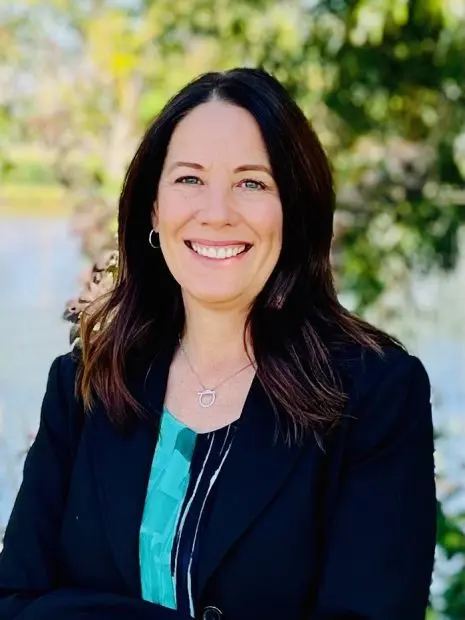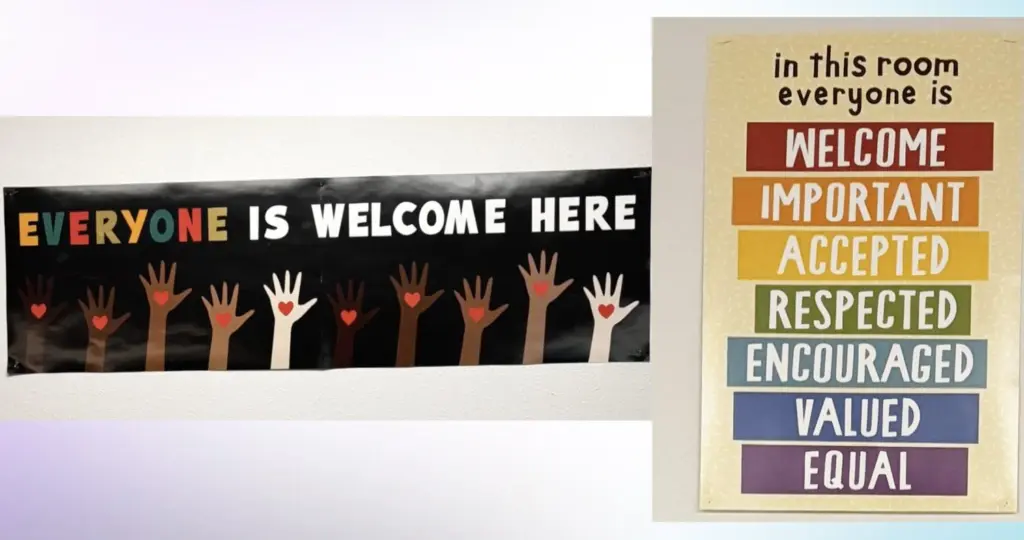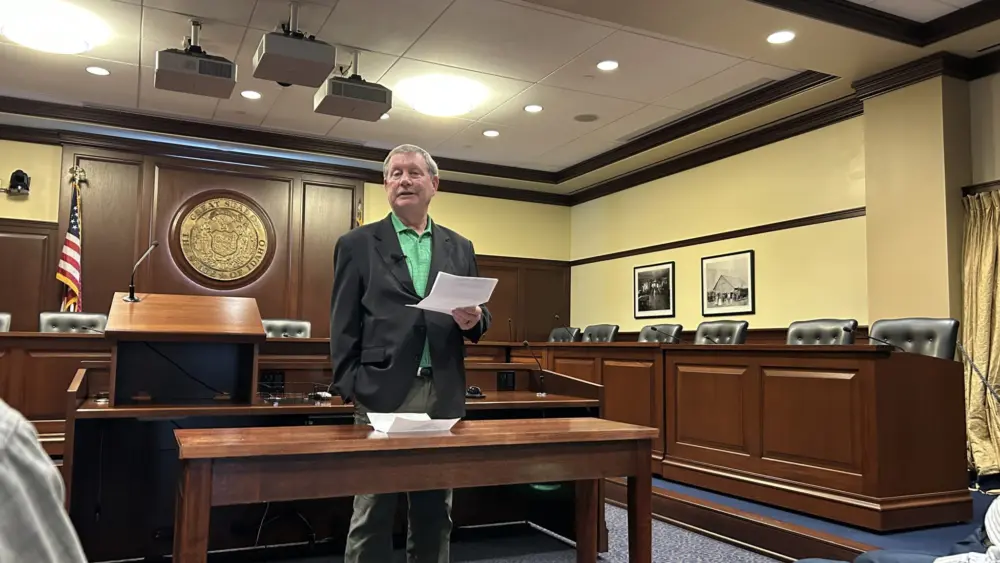Originally posted on IdahoEdNews.org on July 15, 2025
The West Ada school board Monday approved a new policy governing classroom displays like the “everyone is welcome here” banner that has embroiled the state’s largest school district in controversy this year.
Like the old policy — which was under a routine review before the banner controversy — the new rule requires that classroom displays be “content neutral and conducive to a positive learning environment.” Displays that aren’t content neutral are:
- The subject of current intense public argument, disagreement or disapproval,
- Political messages, such as displays of partisan political affiliation, or advocacy for specific political candidates or parties,
- Contentious ideologies, beliefs or social issues, and/or
- Reasonably likely to incite disruption, distraction or division within the school community.
Building principals, in consultation with district administrators and attorneys, will decide whether displays meet the criteria for content neutrality.
The new policy also includes a list of “accepted displays” such as the U.S. and Idaho flags. The list aligns with House Bill 41, a state law enacted this year that prohibits flags and banners promoting “political, religious, or ideological viewpoints.”
West Ada trustees approved the updated policy 3-1 Monday. Board chair Lori Frasure said her vote was an “easy yes,” because the policy complies with the new state law, and Attorney General Raúl Labrador has “very clearly stated where our legislators sit on this.”

“I believe strongly in following state law,” she said.
One addition to the West Ada policy is a review process that allows a district employee, parent or student to appeal an administrative decision on a classroom display. The appeal would be considered by a committee that has at least 50% parent members.
Trustee René Ozuna, the only vote against the policy Monday, praised the new review process, but said the overall policy “still falls short.” The previous policy was “vague,” which allowed a “message of inclusion to be deemed political,” she said.
“It was my hope that we’d correct it in this version,” Ozuna said. “I believe that this policy still falls short in clearly affirming our support for the many unique backgrounds that make up our West Ada community.”
Trustee David Binetti was absent from Monday’s meeting. Trustees Angie Redford and Lucas Baclayon supported the new policy, but did not comment before voting.

Earlier this year, Sarah Inama, a former sixth-grade teacher at Lewis and Clark Middle School in Meridian, protested her principal’s order to remove a classroom banner that said “everyone is welcome here” and featured hands of different skin colors. District administrators decided the sign violated the former policy on classroom displays.
Inama’s story garnered national media attention, and she received significant public support for her opposition to removing the banner. Inama has since accepted a job with the Boise School District.
But the attorney general last month said that the “everyone is welcome here” banner would violate HB 41, the new state law on classroom displays. The banner is part of an “ideological/social movement,” Labrador wrote in a legal opinion. The Republican cited a 2017 Minnesota news story about similar signs, made in response to racist graffiti, and the fact that Idaho Democrats are now selling merchandise with the banner. The merchandise came after Inama’s story became public.
A few West Ada patrons spoke about the district’s new classroom display policy at Monday’s board meeting. Julie Edwards, a mother of two West Ada high schoolers, said patrons are still waiting for answers on why the “everyone is welcome here” banner violated the district’s previous policy.
Marcus Myers, West Ada’s chief academic officer, said on a podcast that the “everyone is welcome here” message combined with images of multi-racial hands made the banner inappropriate for the classroom. But the district hasn’t explained its reasoning to patrons, Edwards said.
“With as much publicity as this has gotten, we need to know why the hands are a problem,” she said. “We just want specifics on what’s acceptable.”
Click here to read the district’s new policy on classroom displays.





